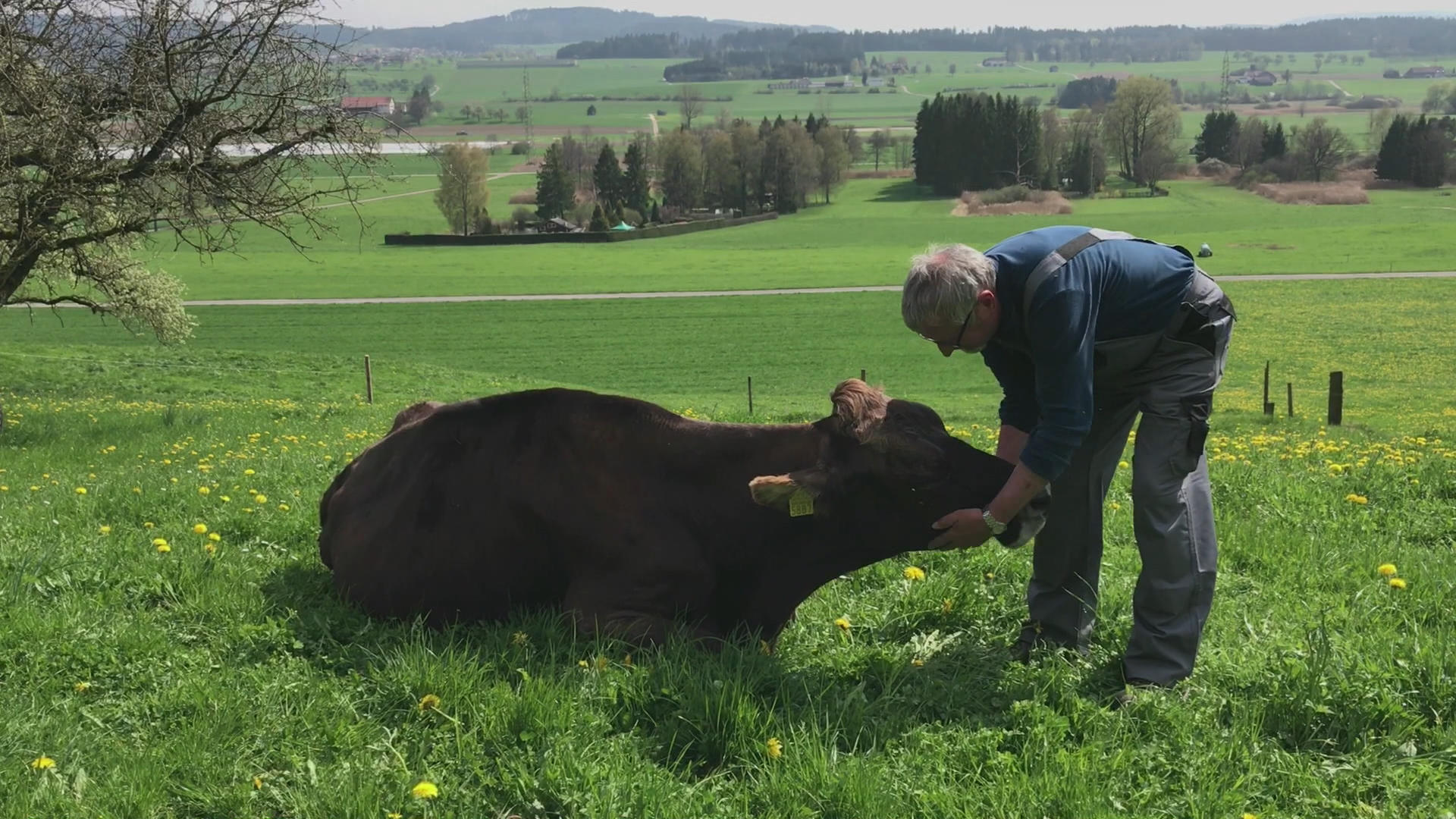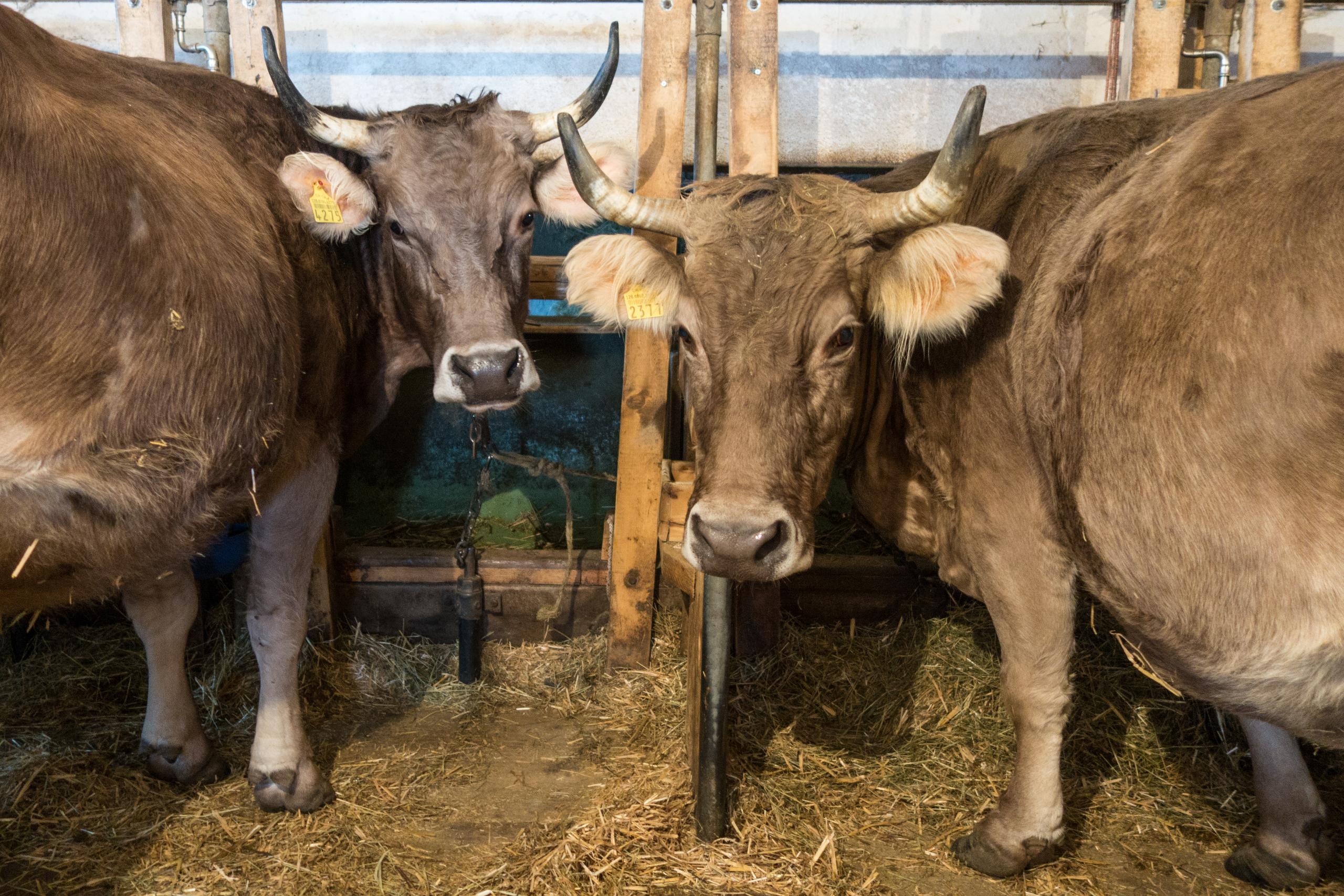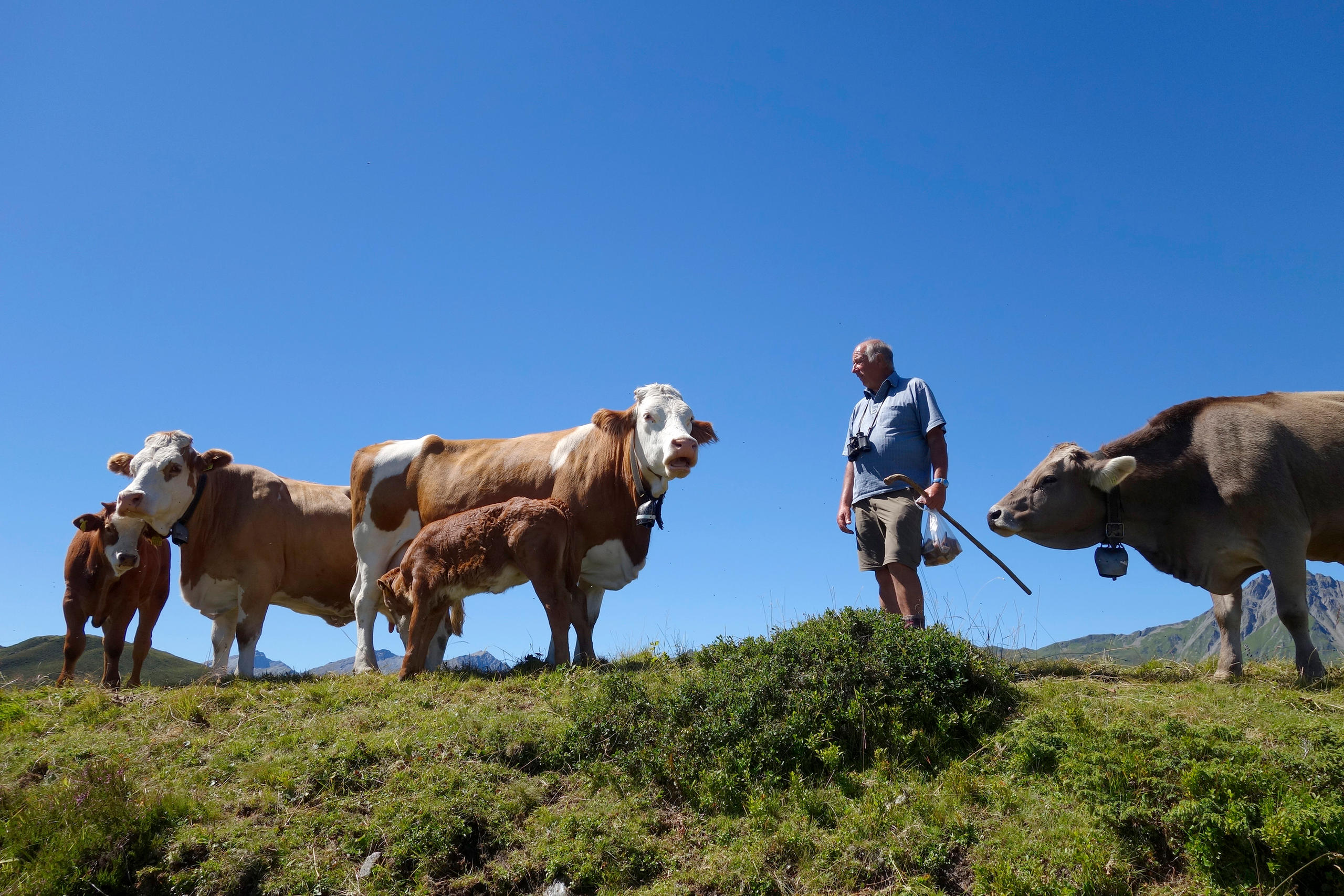Life – not death – begins at retirement for some Swiss cows

Not all unproductive dairy cattle in Switzerland are sent to the slaughterhouse. swissinfo.ch visits a chosen few living out their lives in comfortable retirement.
Bella is small but beautifully formed and has eyelashes to die for. The 14-year-old Hinterwald rare breed cow is one of 18 retired bovine residents at Werner and Erika Horber’s farm in the village of Blasenberg in the northeastern Swiss canton of Thurgau.
The farm is part of a project called Viva La VaccaExternal link (long live the cow) that aims to provide a comfortable retirement for unproductive but loved animals. It is one of four places where cows like Bella can live out their lives in a stress-free environment. Here, a mixed herd of Swiss, Holstein, Jersey, Highland and Hinterwald specimens –both cows and bulls – spend their days chewing the cud, and not much else.
“In the beginning people thought what we were doing was strange and one of my friends refused to talk to me for a while as he thought cows are for milk only,” cow caretaker Werner Horber told swissinfo.ch. “Now everyone accepts what we do even if they wouldn’t do it themselves.”
Werner had worked with dairy cows for 30 years making cheese from their milk. In 2012, he decided to wind up his dairy operation after being put off by plummeting milk prices and the cost of renovating the barn. He joined the Viva La Vacca project the same year with seven cows a sick farmer could no longer look after.
“It is less work and more money looking after retired cows than running a dairy farm,” says Werner’s wife Erika.
Sponsors
The Viva La Vacca is supported by the animal welfare organisation Tierschutzverein Bischofszell-Weinfelden that pays the Horbers a monthly fee of CHF200 ($198) per cow for their upkeep. The funds are raised from donors and people who want to sponsor a particular cow.
Most of the sponsors are individuals and they also get to visit the cows they’ve adopted. One of their regular visitors is a man who sponsors a bull called Leo.
“Leo was seven months old when he escaped while being led onto a truck headed for the abattoir. He ended up on the highway and the incident made news as a result of which the sponsor stepped in to rescue the bull,” says Werner.
Leo is now over seven years old and one of the youngest retirees on the farm. The oldest resident is Corba, a 21-year-old female.
Not everyone can look after Viva La Vacca’s retired cows. The farmers must have a positive attitude towards the project, experience in animal care, grazing land and weatherproof barn, as well as guarantee the cows spend their days outdoors.
“In the beginning it was hard to find farms that were willing to take in retired cows. Since then, the project has interested a lot of farmers and now we can choose who to work with,” says Reinhold Zepf, president of Tierschutzverein Bischofszell-Weinfelden.
Special treatment
The elderly animals receive the kind of care specific to their advanced years. They are fed a special diet that is focused on longevity. Unlike dairy or beef cattle, they are not allowed to graze on fattening young grass. Even the grass used to make hay is allowed to grow taller before being harvested and dried. This ensures that the cows’ diet is not too rich and they remain healthy for longer.
The animals are also allowed to sleep in.
“There is no need to rush to the barn at 6am to milk them. Sometimes, they are still asleep when I come to feed them at 8 o’clock,” says Werner.
The emphasis is on avoiding stress at all costs even if that means interfering with the natural order of things. Bulls have to be castrated before they can join the herd.
“The only thing I miss is not having calves around. Having a calf causes a certain amount of stress for the older cows and hence we do not want that,” says Werner.
The idea for the project was born 15 years ago when a schoolteacher was aghast to learn that a cow called Kassja was due to be slaughtered after becoming unprofitable. The teacher had visited the farm near Schaffhausen with his students many times on school trips and had grown attached to the animal. He agreed to sponsor the cow’s retirement but no home could be found for her. And that is how Viva La Vacca came into being.
Today, the project boasts four farms in northeastern Switzerland, close to the border with Germany, hosting 40 retired cows and bulls. In total, Viva La Vacca has around 250 donors and 60 cow sponsors.
As of 2016, Switzerland had 697,153 cows. In the same year, 161,209 cows were slaughtered and transformed into 48,859 tons of meat. According to the Horbers, dairy cows are productive up to seven to nine years of age after which problems like infertility, poor milk quality and health issues become a concern.
The majority of cow meat is used to make sausages, including Switzerland’s unofficial national sausage “cervelat”. A law requiring checking cows for pregnancy before slaughtering only came into effect in February 2017.

In compliance with the JTI standards
More: SWI swissinfo.ch certified by the Journalism Trust Initiative













You can find an overview of ongoing debates with our journalists here . Please join us!
If you want to start a conversation about a topic raised in this article or want to report factual errors, email us at english@swissinfo.ch.